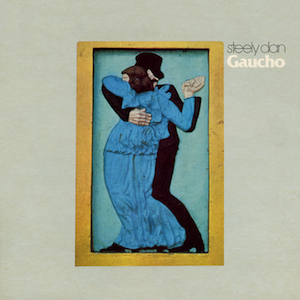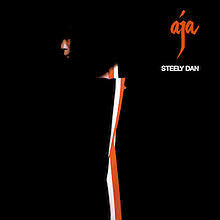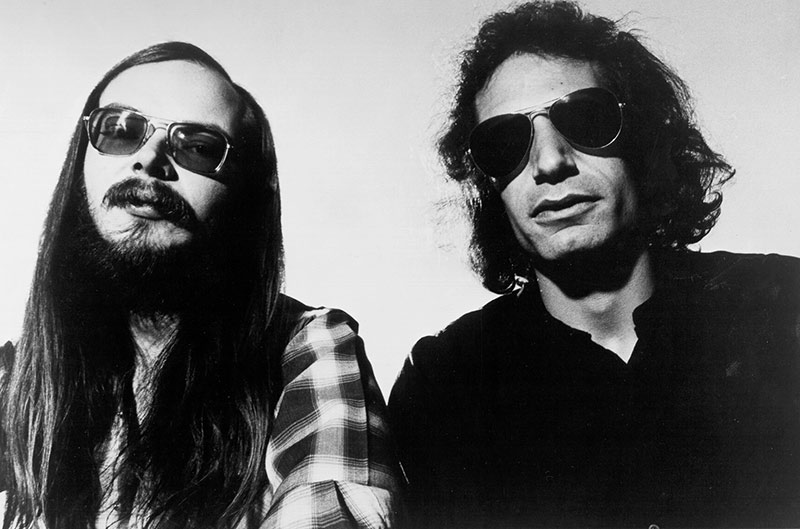Steely Dan’s Gaucho — Treasure or Trash?
Some questions are as old as humanity: which came first, the chicken or the egg? Is there a God? What is the meaning of life? If a tree falls in the woods and there’s no one there to hear it, does it make a sound? Other questions are more recent and specific to music: Does Greta Van Fleet sound too much like Led Zeppelin? Which Grateful Dead offshoot is truest to the sound and spirit of the original band? Is Billy Strings really as good as everyone says he is?
To this list I would add a musical query dating back to 1980: does Steely Dan’s Gaucho deserve to be included among their best work or is it emblematic of what made them overrated and spurred a backlash against their sound? I know many people–including members of my immediate family–who swear by Gaucho as the ultimate masterpiece from Walter Becker and Donald Fagen. The anti-Steely Dan crowd is best exemplified by this exchange from the 2007 film Knocked Up:
Pete (played by Paul Rudd): The music industry is different now. Steely Dan would never have a chance.
Ben Stone (played by Seth Rogen): Well maybe it’s because Steely Dan gargles my balls.
Pete: They’re incredible. Really old Steely Dan.
Ben Stone: If I ever listen to Steely Dan I want you to slice my head off with an Al Jarreau LP.
So which is it? To help you, dear reader and music enthusiast, decide, I will herein make the case for both sides before rendering a final and irrefutable verdict. But first, some background about my personal history with the bards from Bard College (who had Chevy Chase as their drummer in an early incarnation).
I was on the Danwagon from a very early age. Their debut, Can’t Buy A Thrill, was released the fall of my seventh grade year. “Do It Again” began logging radio play that has not ceased to this day (please give it a rest already, classic rock programmers). My unsuccessful audition during middle school for lead singer in a rock band included a painfully awful stab at “Reeling in the Years” that disqualified me immediately (try singing the song yourself all the way through before you pass judgment). A few years later, my principal memory of my first job is walking home singing The Royal Scam‘s “Haitian Divorce.” I bought Aja and Gaucho on the days they were released. When I started collecting live recordings in high school, finding a tape of a live Steely Dan concert was the holy grail; the band had ceased touring after Countdown to Ecstasy, their second (and arguably best) effort. When the band started touring again in 1993 after a long hiatus, I was in the crowd at Red Rocks for their first Denver show. I have been listening to Steely Dan most of my life, during which they’ve gone from being cool to uncool to cool again thanks to the emergence of “Yacht Rock” as a certifiable musical movement that has spurred its own fanbase.
The arguments for and against Gaucho:
GAUCHO IS STEELY DAN’S BEST RECORD
Although they started as a “traditional” rock band, Steely Dan evolved into a studio collective wherein Becker and Fagen recruited different musicians for different tracks, many of them pulled from the ranks of New York and LA’s finest session players. Gaucho is the pinnacle of this concept, with participation from Steve Gadd, Bernard Purdie, the Brecker Brothers, Tom Scott and Joe Sample, all of whom play on some of the best jazz, rock and jazz-rock albums of the era. Dire Straits’ Mark Knopfler contributed to “Time Out of Mind” and Rick Derringer of “Hang On Sloopy” and “Rock and Roll, Hoochie Koo” fame plays on “My Rival.” Legendary jazz pianist Keith Jarrett even gets a songwriting credit on the title track.
 Which is to say that Gaucho is like the supermodel of Steely Dan LPs. Not a single hair is out of place, and if the record sounds perfect it’s because Becker and Fagen planned it down to the smallest detail. Participants marveled at how every single note of every single solo had been charted before they showed up to play: it wasn’t a question of what to play, but rather how to play it as precisely as the songwriters envisioned it.
Which is to say that Gaucho is like the supermodel of Steely Dan LPs. Not a single hair is out of place, and if the record sounds perfect it’s because Becker and Fagen planned it down to the smallest detail. Participants marveled at how every single note of every single solo had been charted before they showed up to play: it wasn’t a question of what to play, but rather how to play it as precisely as the songwriters envisioned it.
And what vision! “Babylon Sisters” and “Time Out of Mind” invented Yacht Rock decades before the phrase had been coined. Its blend of melody and studio sheen stands unmatched, and oh those horn parts! Toto, Christopher Cross and Pablo Cruise might have mined the sound for Top 40 success, but Gaucho is art, a marriage of the smoothest, silkiest lounge-rock grooves with Fagen’s typically highly literate lyrics rendered in his nasally, New York tone. It’s no surprise that “Hey Nineteen” was Steely Dan’s last big hit. It featured Fagen’s trademark vocals and cynicism–in this case a grizzled middle-age man simultaneously complaining about and celebrating his relationship with a much-younger woman–set to an irresistible tune propelled by his keyboards and the backing vocals of Frank Floyd and Zack Sanders.
Steely Dan had some jam-band improvisational tendencies in their earlier days, as best symbolized on Countdown to Ecstacy, and aspired to be a touring band like the rest of their seventies peers. By Gaucho, they had redefined themselves as a purely studio outfit, and it showed. They played the studio like an instrument on the record, and the result is the apex of their discography, a record that built on the smash success of 1977’s Aja–their biggest-selling LP to that point–and created rock music with jazz credibility. It’s no wonder that it is so revered and is still as relevant today as on the day nearly forty-one years ago that it was released.
GAUCHO EMBODIES EVERYTHING THAT’S WRONG WITH STEELY DAN
In their effort to achieve studio perfection, Steely Dan wrung every last bit of soul and spontaneity out of their music. At a time when bands like The Clash were railing against social inequality and the powers that be, Steely Dan could not have been more tone-deaf to the world around them. Punk and new wave’s vitriol embraced the democratization of music: if you had a message and a desire to scream it from the mountaintop, did you really need to be a musical virtuoso? The Ramones changed the world without ever knowing more than four chords.
Gaucho represents everything that punk and new wave stood against and deserves to be reviled. Steely Dan wanted to impress you with their savvy and sophistication at a time when those qualities were the problem, not the answer. Joe Strummer’s passion poured through his (then) misshapen teeth. Steely Dan wasn’t trying to change the world; their principal complaint seemed to be that a much-younger lover wasn’t hip to Aretha Franklin, although that didn’t stop them from using tequila and marijuana to get her into the sack.
 Gaucho may have been cut from the same cloth as Aja, but where that album showed a band evolving to a new, interesting sound, Gaucho was the same concept taken too far without any noticeable improvement. The first bite might have been sumptuous but the second revealed a hollowness and craft-above-content approach that showed the group had stayed at the party a little too long. It’s no wonder they broke up less than a year after its release: they had taken their concept past its peak and knew there was nowhere left to go.
Gaucho may have been cut from the same cloth as Aja, but where that album showed a band evolving to a new, interesting sound, Gaucho was the same concept taken too far without any noticeable improvement. The first bite might have been sumptuous but the second revealed a hollowness and craft-above-content approach that showed the group had stayed at the party a little too long. It’s no wonder they broke up less than a year after its release: they had taken their concept past its peak and knew there was nowhere left to go.
Whether Gaucho deserves credit/blame for creating Yacht Rock is beyond debate. YR icon Michael McDonald’s vocals are a big part of “Time Out of Mind,” the best track on the record, and drummer Jeff Porcaro (and his brother) were in Toto. At its core, Yacht Rock is smoothly-rendered, heartless lounge-rock with zero passion. Like a meal soaked in MSG, it is satisfying at the time of experience but instantly forgettable. It may be inspirational if you are on (or dream of being on) a private jet doing lines as you taxi down the tarmac, but it won’t change your life and worse, it is unlikely to leave any kind of musical mark on your psyche.
So which is it? Is Gaucho treasure or trash? My verdict: Treasure, because we’re still talking about it and because even subpar Steely Dan is still a cut above the rest. Which isn’t to say I’ll be spinning it anytime soon.



